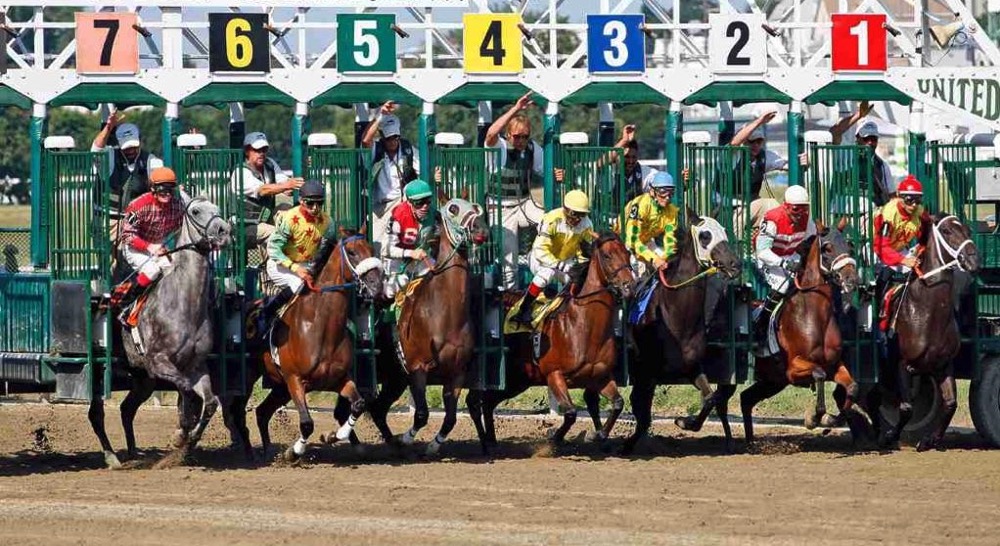Comments
ANIMAL WATCH - The news that Churchill Downs was suspending racing “for two or three days next week” but then it would continue its June calendar of racing at Ellis Park in Henderson, Ky., elicited a strong reaction from Animal Wellness Action President Wayne Pacelle after what he describes as “the unnerving and unacceptable deaths of 12 horses in a month’s time, which is a higher rate of loss higher than “the rash of deaths at Santa Anita Park in 2019, when 42 horses died on the track.”
On June 2, Churchill Downs CEO Bill Carstanjen told the Courier-Journal that, due to the deaths, the Louisville horse racing track was suspending operations and moving the remainder of its Spring Meet to Ellis Park in Henderson, Kentucky, to provide time to conduct a “top-to-bottom review of all of the details and circumstances so that we can further strengthen our surface, safety and integrity protocols.”
But Pacelle says moving racing for two or three days does not address the underlying problems that must be investigated and resolved at their root cause.
“This is a response, but it feels like a shell-game response,” Pacelle stated.
“If the track surface was the singular cause of the rash of horse deaths at Churchill Downs, changing the racing venue might make sense. But it’s apparent that there’s more at work here than track surface threats.”
“We renew our request that Churchill Downs suspend its racing schedule until there is a proper forensic analysis of the horse deaths and a comprehensive plan to remediate future deaths.”
“The show cannot just go on, and the leadership of the track should hit the pause button for the well-being of the horses and of the industry itself,” added Louisvillian Joseph Grove, director of communications for Animal Wellness Action and the Center for a Humane Economy.
AWA ALSO CALLS FOR TRAINER SUSPENSIONS

Parents Pride's trainer, Saffie Joseph Jr., was suspended from Churchill Downs on May 4 after another one of his horses collapsed and died during the meet, according to the Courier-Journal. “We have no answers,” Joseph said after learning of his suspension. “I mean, there's a lot of questions. There's a lot of thoughts, but there's nothing right now.”
Authorities saw Bob Baffert’s horse Havnameltdown die in competition in the race card preceding the running of the Preakness. And, based on that, Baffert’s entry for that Triple Crown race, National Treasure, should have been scratched from competition.
Now, HISA has an opportunity to take appropriate action with trainer Rody R. Rodriguez. He has seen four horses under his care die this year--with three deaths occurring at Aqueduct and one at Belmont Park, which this weekend hosts the third leg of the Triple Crown.
Two of Rodriguez’s horses died just last week, with 3-year-old Midnight Empress vanned off and euthanized just days before 6-year-old horse Chaysenbryn suffered a right front leg injury and was then euthanized at Belmont Park.
“Now, HISA (Horseracing Integrity and Safety Authority) has an opportunity to take appropriate action with trainer Rody R. Rodriguez. He has seen four horses under his care die this year—with three deaths occurring at Aqueduct and one at Belmont Park, which this weekend hosts the third leg of the Triple Crown,” AWA contends.
(The first KHRC mortality report on three of the horses and Parents Pride can be seen here.)
YOUNG HORSES DYING IN RACES

In a June 6, 2023, appeal to the to adopt rules to suspend trainers whose horses die in competition, Pacelle stated, Young and fit horses dying in competition is no longer acceptable in American racing.”
“If horses cannot compete in races and walk off the track under their own power, their trainers should be suspended from entering horses into races,” Pacelle told the Horseracing Integrity and Safety Authority (HISA), a private self-regulatory organization created by Congress to develop rules related to horseracing control and racetrack safety and implement “a national set of integrity and safety rules that are applied consistently to every thoroughbred racing participant and racetrack facility.”
“HISA clearly has the authority to prevent dangerous trainrs from putting more horses in competition,” he said.
“When trainers understand they’ll be suspended if their horses die in competition, then they will take precautions to prevent that terrible outcome.”
“Now there are lamentations without consequences. When young, healthy horses die in competition, that should trigger more than expressions of sadness. It should trigger mandatory suspensions.”
“Trainers must take responsibility for the care of their horses and accept responsibility when the animals die in competition. It is not normal for a three-year-old or a six-year-old horse to die in a non-violent sport that involves a one-mile sprint,” he said.
HOPE FOR THE HORSES
More broadly,” Pacelle states, Animal Wellness Action and the Center for a Humane Economy have called for a culture change within the industry and specific actions by the Authority to reduce on-track deaths of otherwise healthy horses:
- Robust enforcement of the race-day doping prohibitions, with meaningful national suspensions and other penalties for violators of the rules.
- Banning the use of the whip in American racing.
- Developing a plan to hold trainers and owners accountable to reduce death-rates for racing horses to levels approaching zero, with appropriate national suspensions for trainers whose horses die at the tracks.
And, after a long delay, Horseracing Integrity and Safety Authority (HISA) the sport’s new national governing body, reportedly began implementation of a national race-day anti-doping regulatory plan this month.
See also: Horse Racing: Running to Death is Not a Sport!
(Phyllis M. Daugherty is a former Los Angeles City employee, an animal activist and a contributor to CityWatch.)






